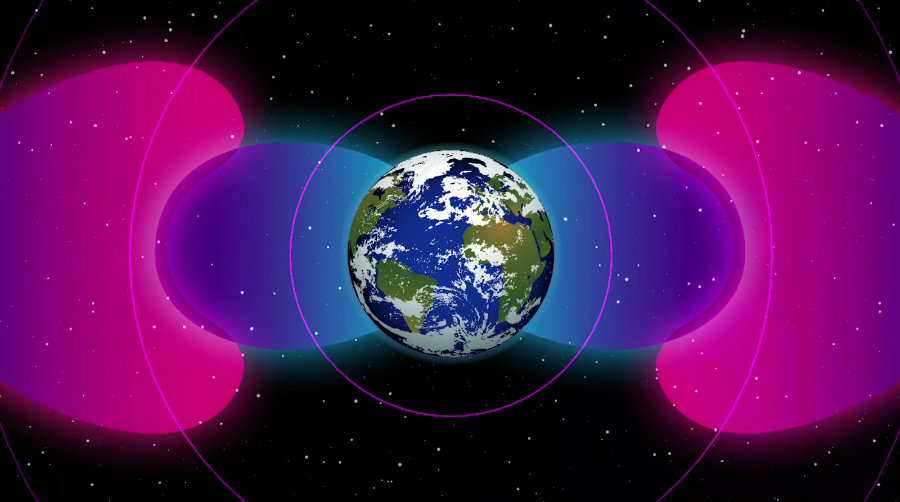According to NASA, a human-made bubble of radio waves could be shielding Earth from radiation. Scientists found that a particular type of communications known as very low frequency or VLF radio communications have been interacting with particles in space, affecting how and where they move.
These interactions sometimes create a barrier around Earth against high-energy particle radiation found in space. The findings were published on April 17 in the journal Space Science Reviews.

VLF transmissions create a shield bubble against radiation
VLF radio requires a large antenna for detection, which is why they’re only used for special purposes. A common use is for submarine communication, which works because of the penetrative capacity of the long VLF waves. However, VLF waves can also travel out into space, and they interact with charged particles, changing their movement.
“A number of experiments and observations have figured out that, under the right conditions, radio communications signals in the VLF frequency range can, in fact, affect the properties of the high-energy radiation environment around Earth,” said Phil Erickson, assistant director of the MIT Haystack Observatory, according to a press release from NASA.
VLF signals are transmitted from ground stations at enormous powers to communicate with submarines deep in the ocean. These VLF waves are intended for communications below the surface, but they also extend out beyond our atmosphere, shielding Earth in a VLF bubble. The bubble is even seen by spacecraft high above our planet’s surface, such as NASA’s Van Allen Probes, which study electrons and ions near Earth’s atmosphere.
The probes noticed that the outward extent of the VLF bubble corresponds almost exactly to the inner edge of the Van Allen radiation belts, which are layers of charged particles held in place by Earth’s magnetic fields.

VLF transmissions will be tested to see if they remove excess radiation
According to the study, VLF transmissions are not the only human activity affecting space. They noted that between 1958 and 1962 the U.S. and the U.S.S.R conducted high altitude nuclear detonations. Those blasts, which occurred at between 16 and 250 miles above the surface of the Earth, mimicked some of the effects caused by solar wind, such as bombarding the planet with high-energy particles, distorting the magnetic field and creating radiation belts.
“The tests were a human-generated and extreme example of some of the space weather effects frequently caused by the sun,” said Erickson, according to the Smithsonian Magazine. “If we understand what happened in the somewhat controlled and extreme event that was caused by one of these human-made events, we can more easily understand the natural variation in the near-space environment.”
Dan Baker, director of the University of Colorado’s Laboratory for Atmospheric and Space Physics in Boulder, dubbed this lower limit the “impenetrable barrier” and believes that if there were no VLF transmissions, the radioactive boundary would likely stretch closer to Earth. In fact, scientists compared the current extent of the radiation belts from Van Allen Probe data to satellite data from the 1960s and noticed that the inner boundary is now much farther away than its previous recorded position when VLF transmissions were more limited.
Scientists believe that with further study, VLF transmissions could help to remove excess radiation from the near-Earth environment. According to NASA, plans are already underway to test VLF transmissions in the upper atmosphere to see if they could remove excess charged particles. Radiation-charged particles usually appear during periods of intense space weather, like when the sun erupts with giant clouds of particles and energy.
Source: NASA
